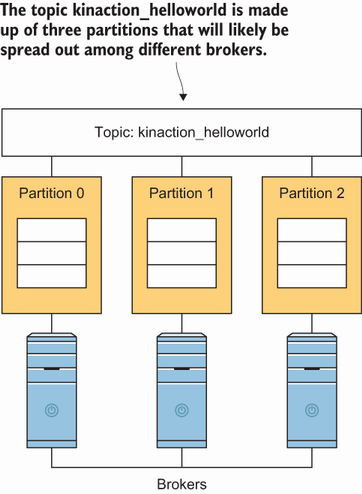In this chapter, we will look further into how we might store our data across topics as well as how to create and maintain topics. This includes how partitions fit into our design considerations and how we can view our data on the brokers. All of this information will help us as we also look at how to make a topic update data rather than appending it to a log.
To quickly refresh our memory, it is important to know that a topic is a non-concrete concept rather than a physical structure. It does not usually exist on only one broker. Most applications consuming Kafka data view that data as being in a single topic; no other details are needed for them to subscribe. However, behind the topic name are one or more partitions that actually hold the data [1]. Kafka writes the data that makes up a topic in the cluster to logs, which are written to the broker filesystems.
